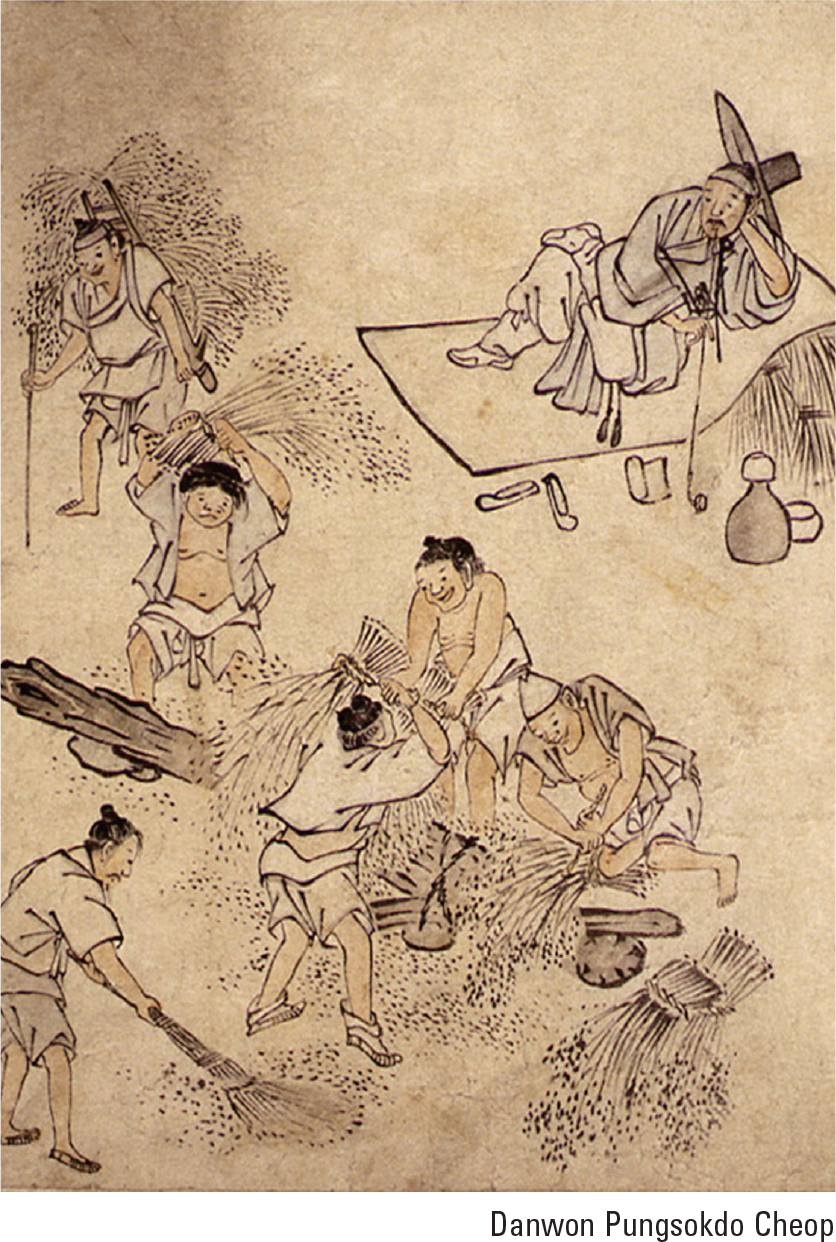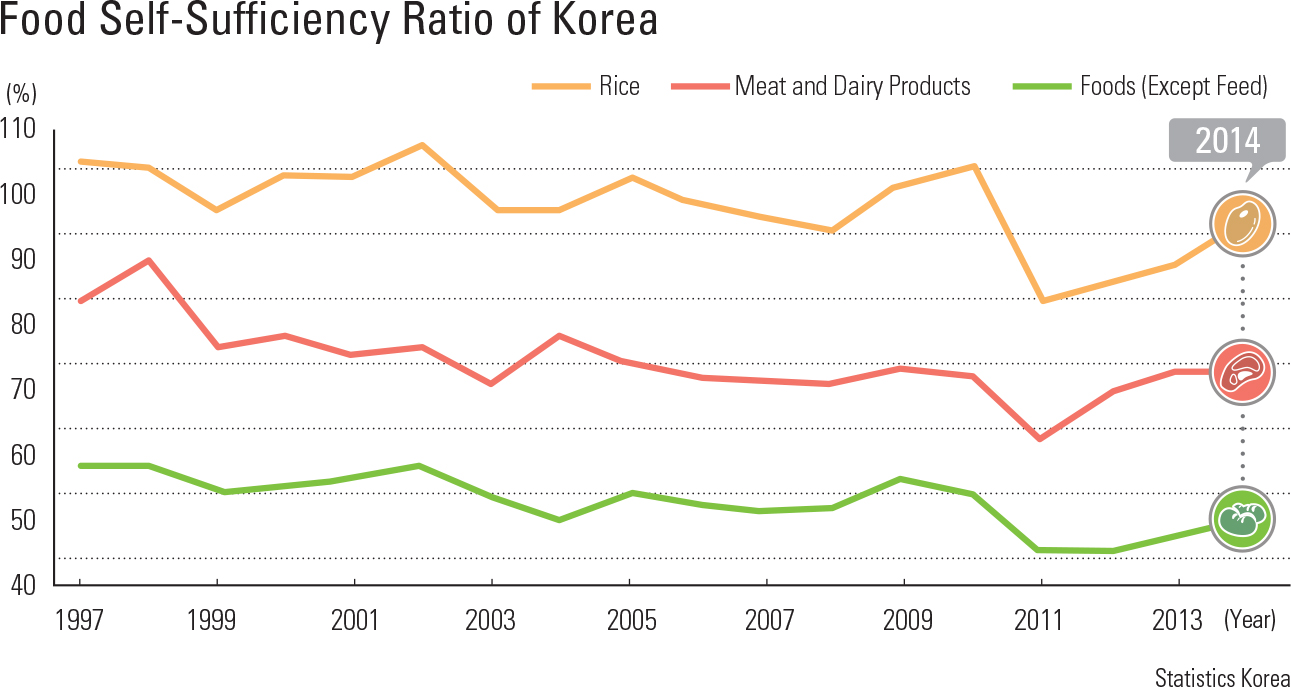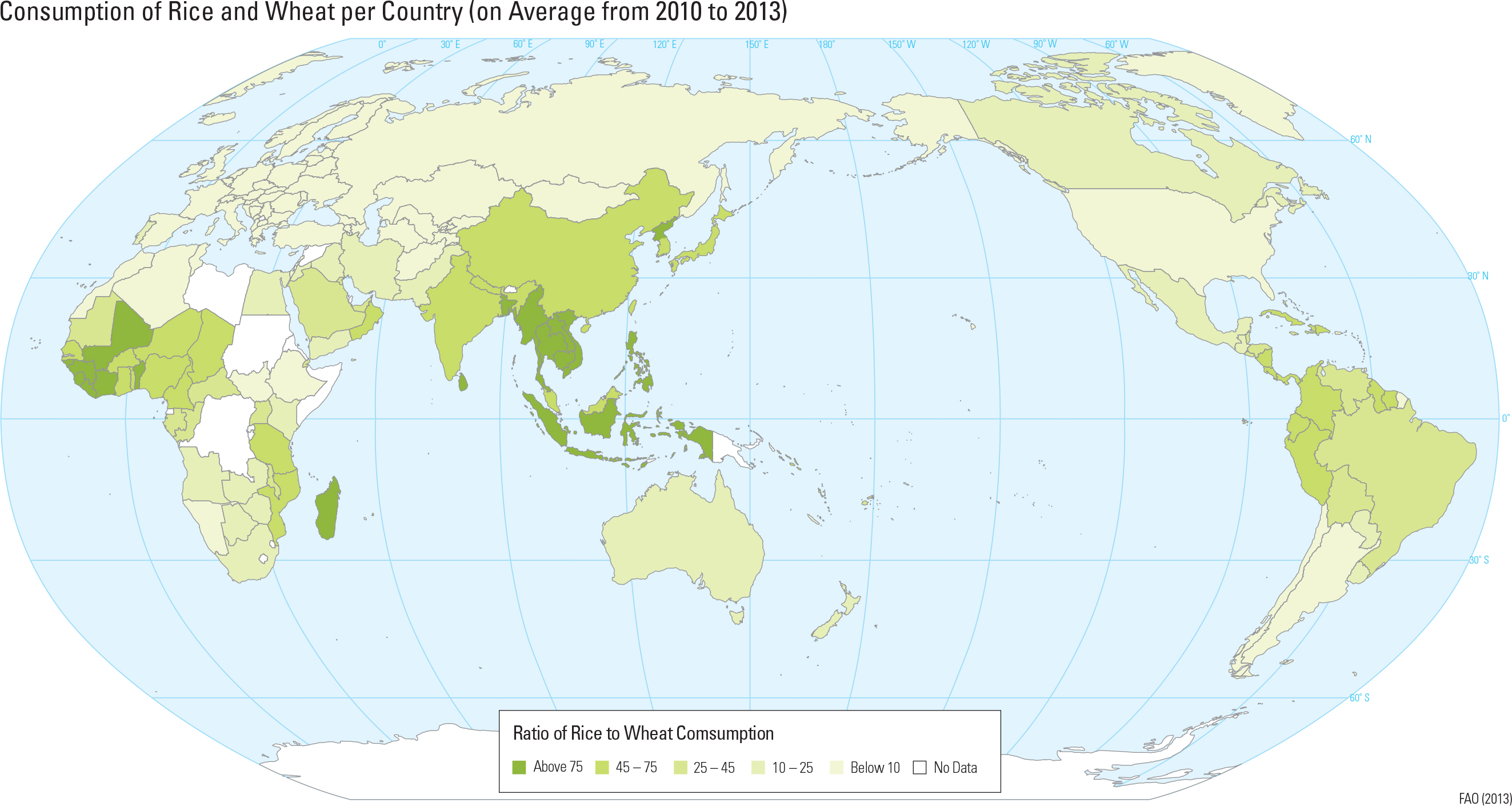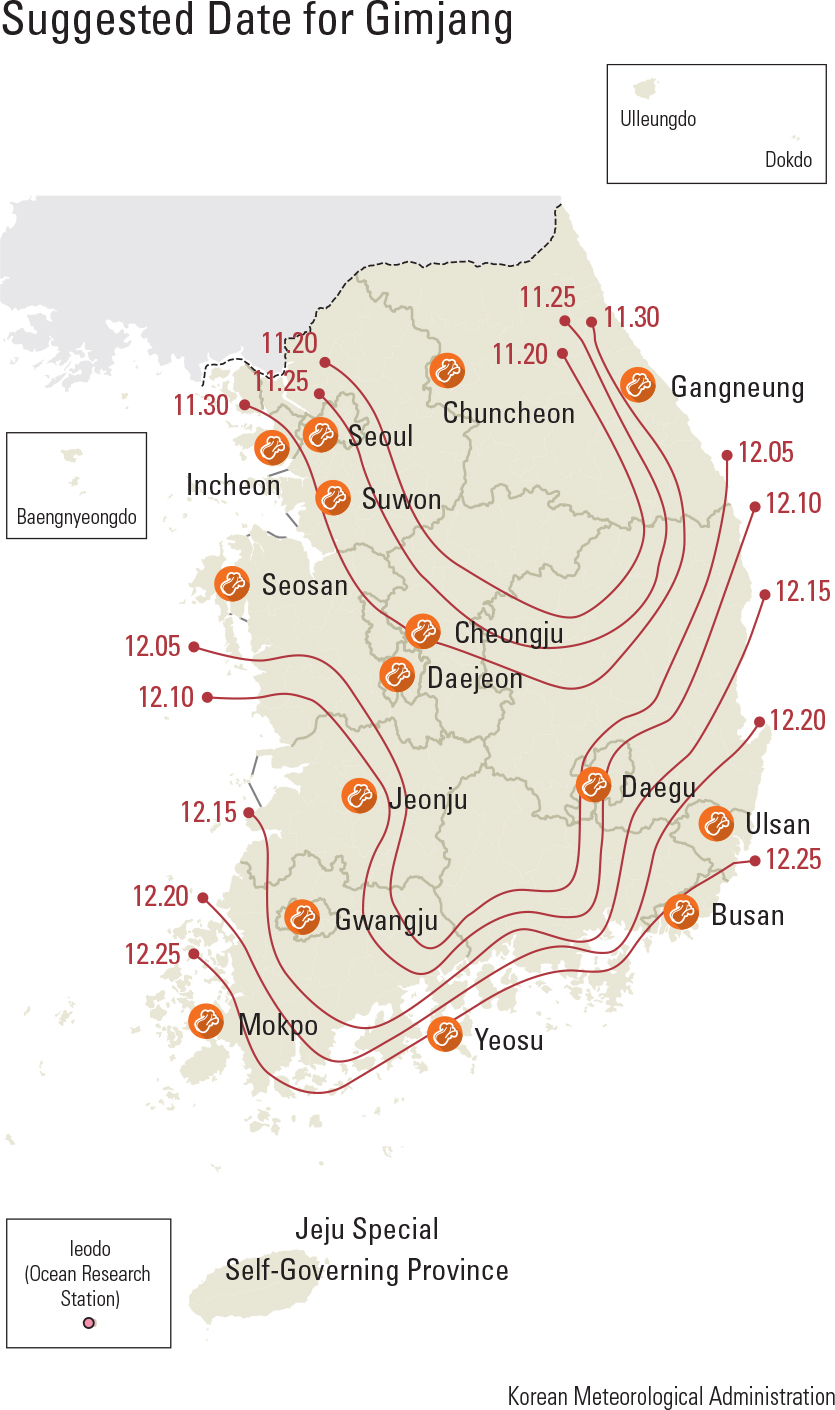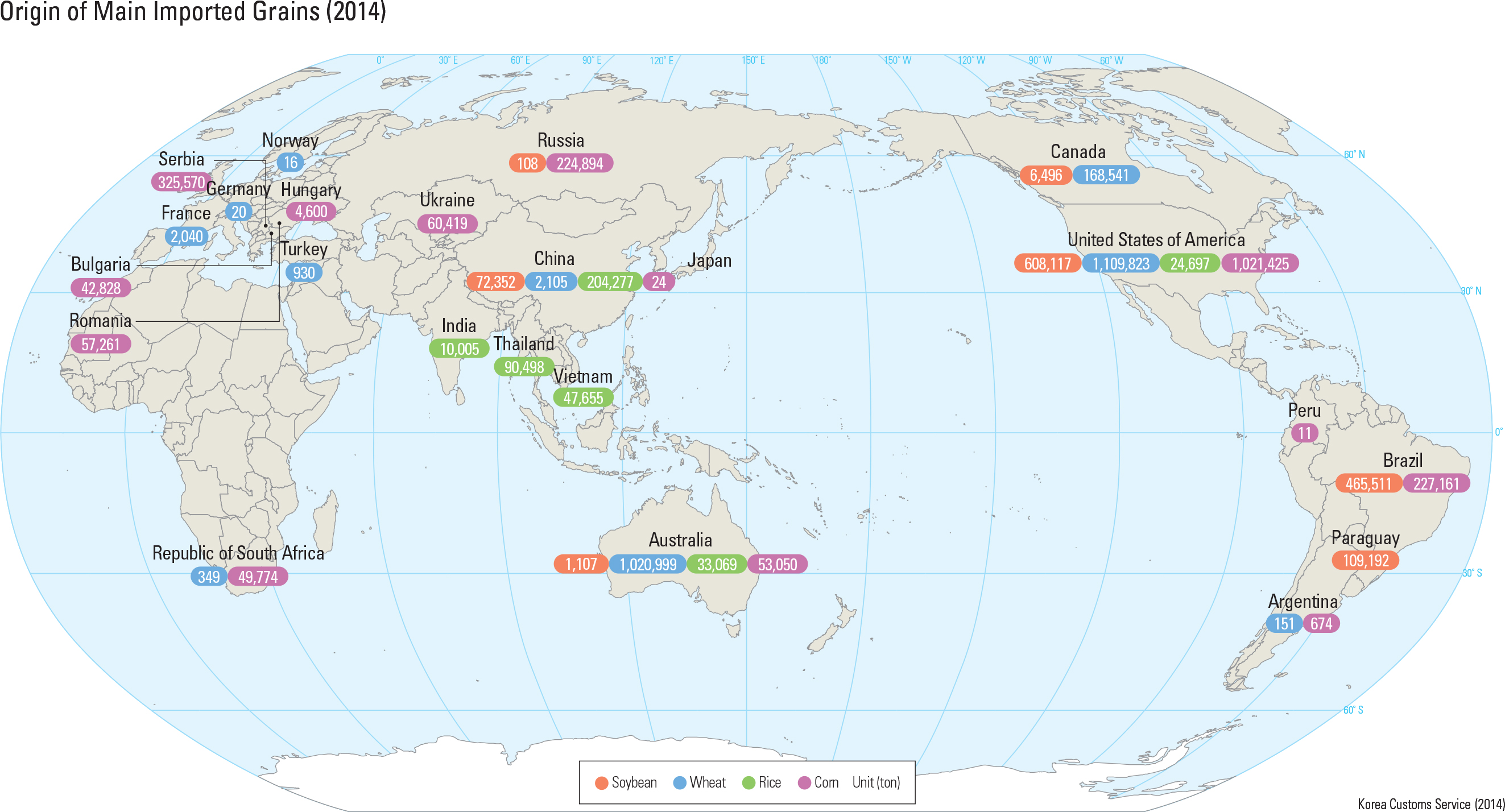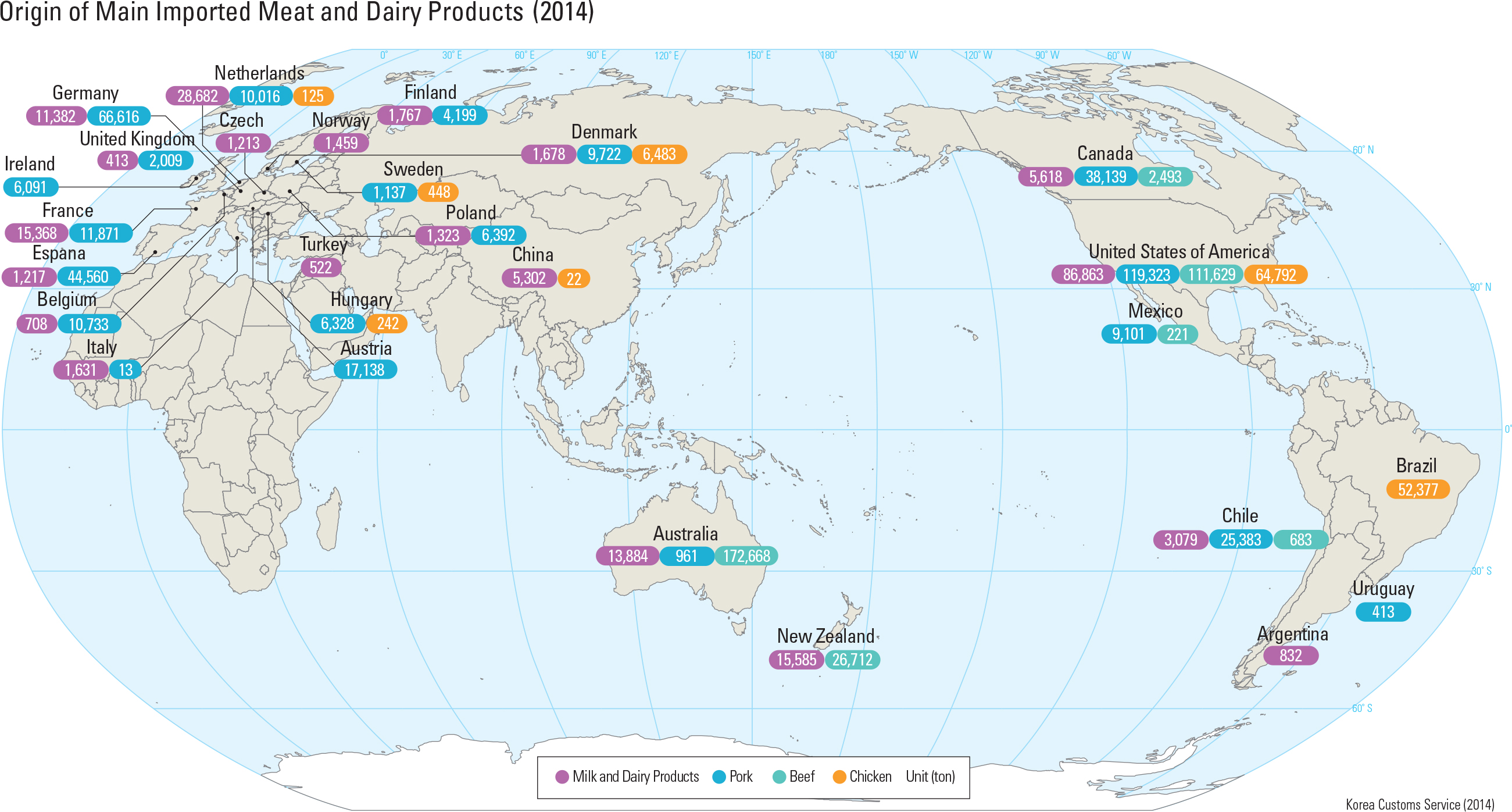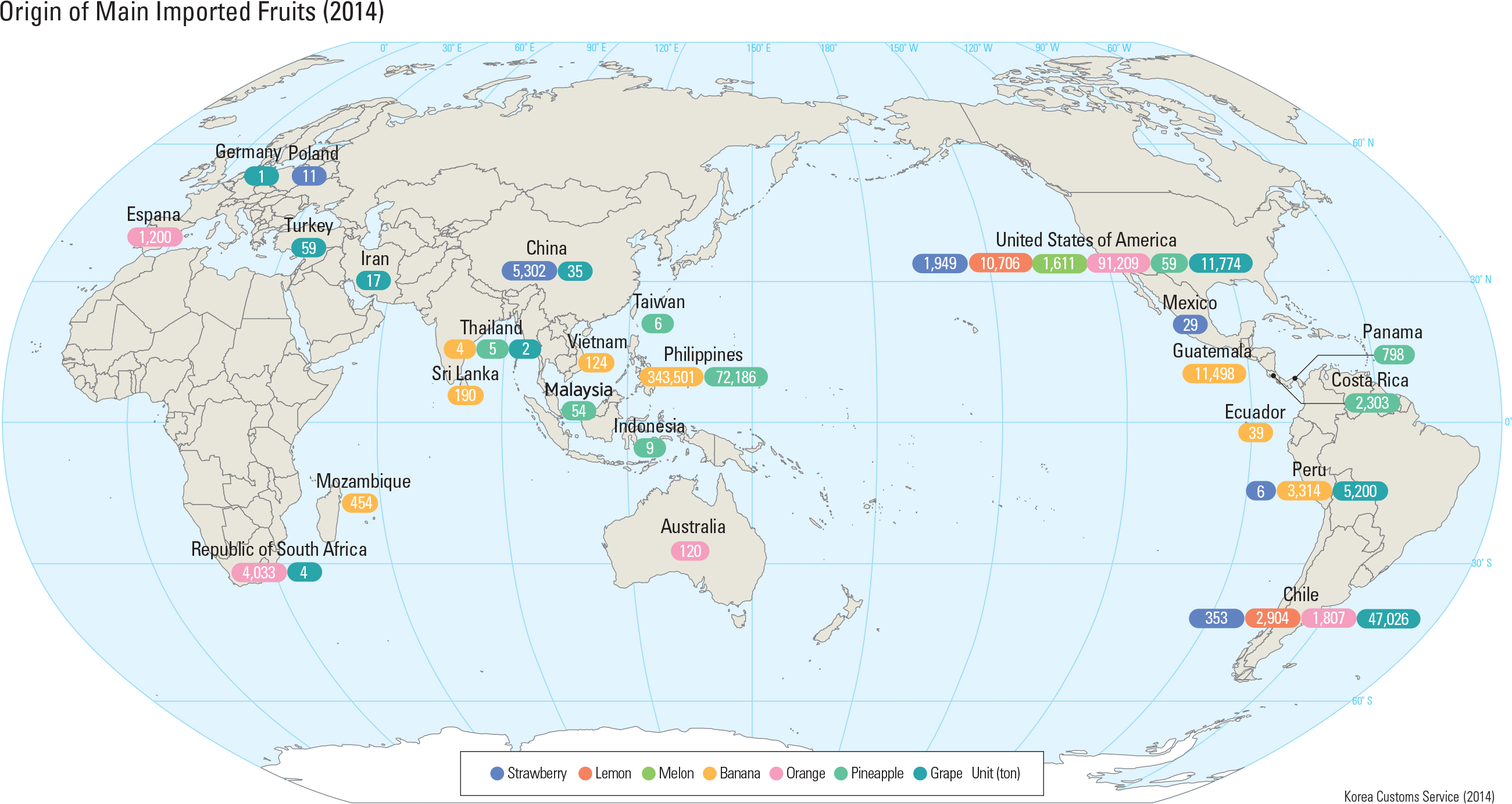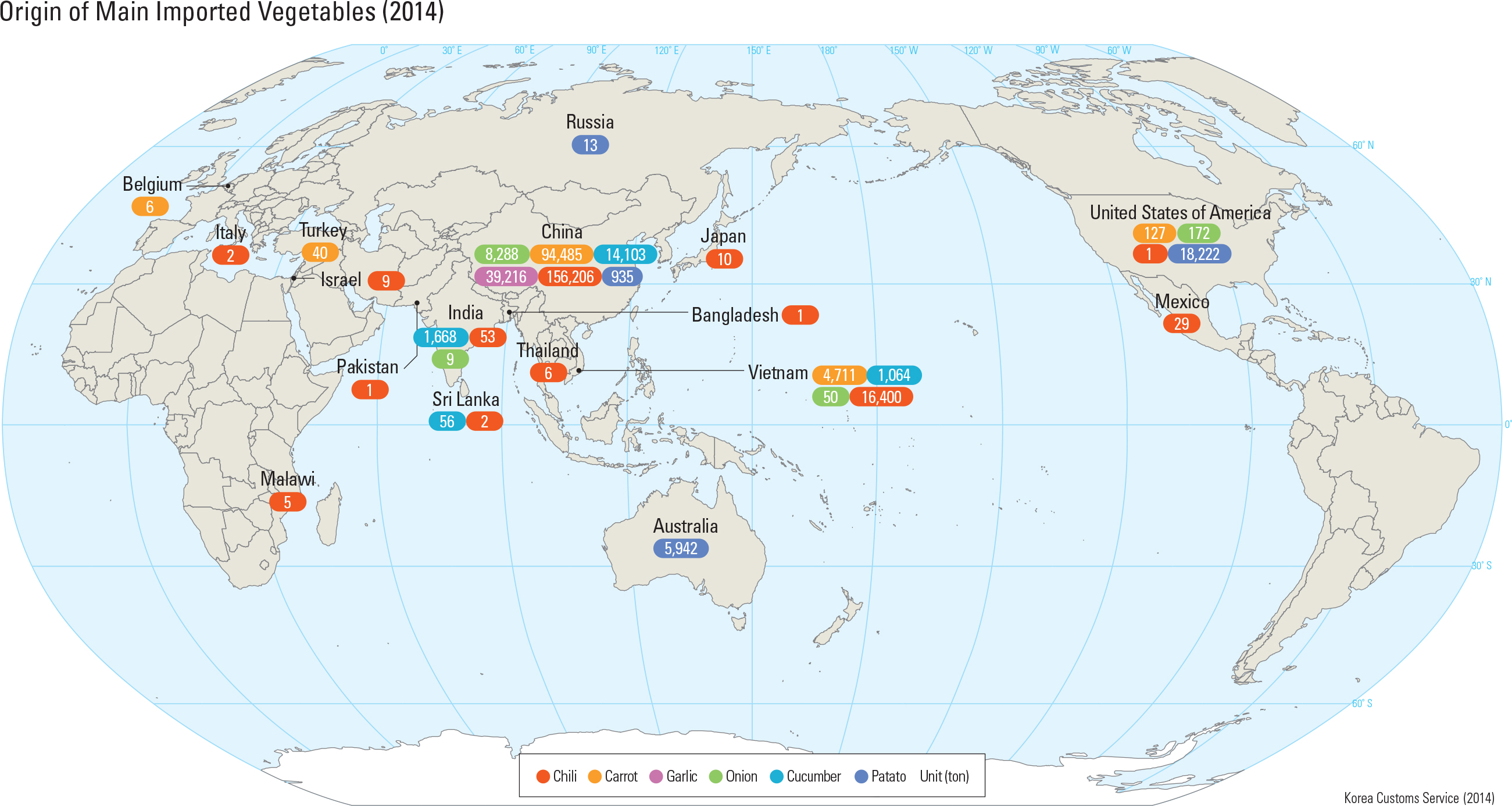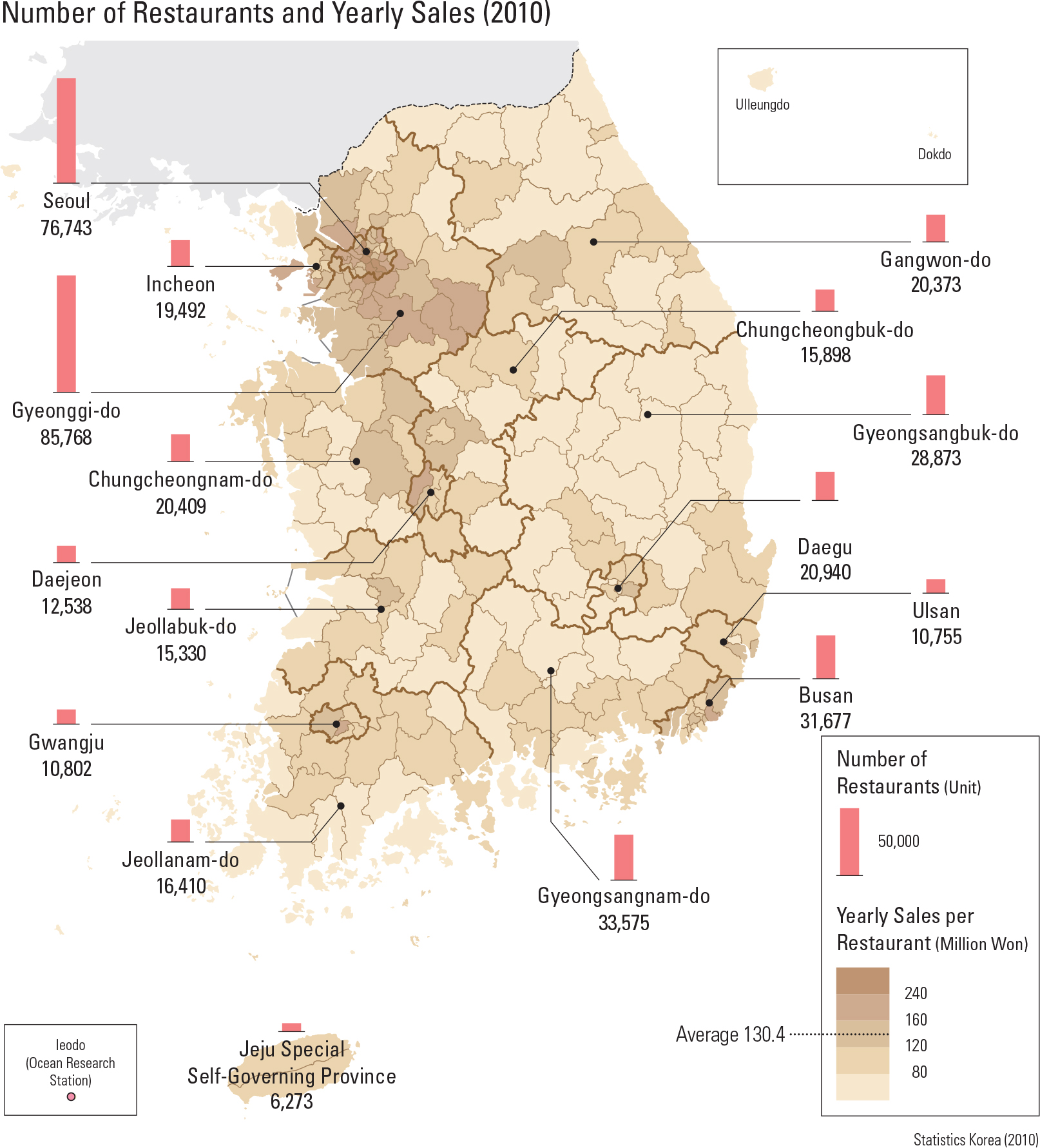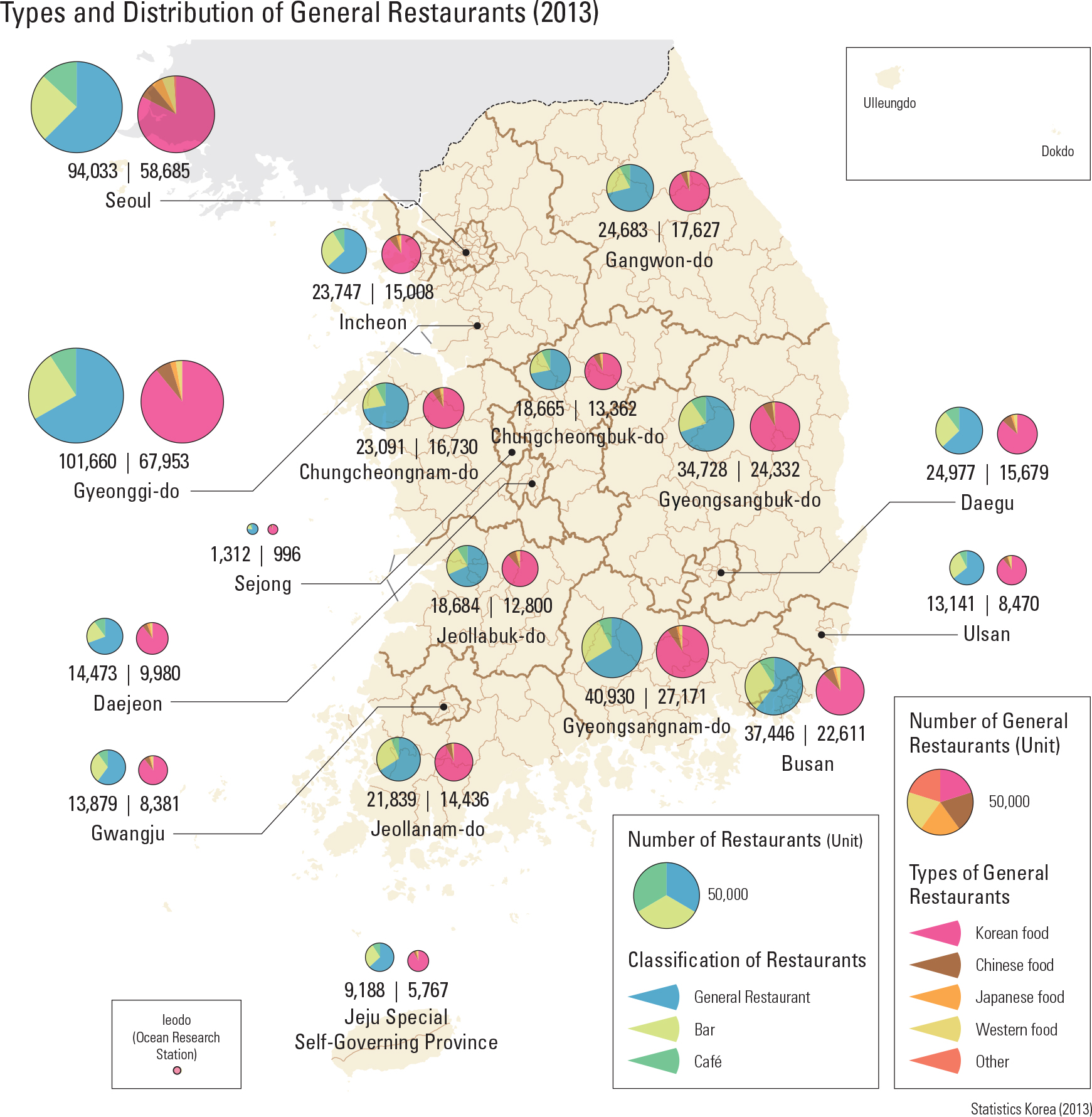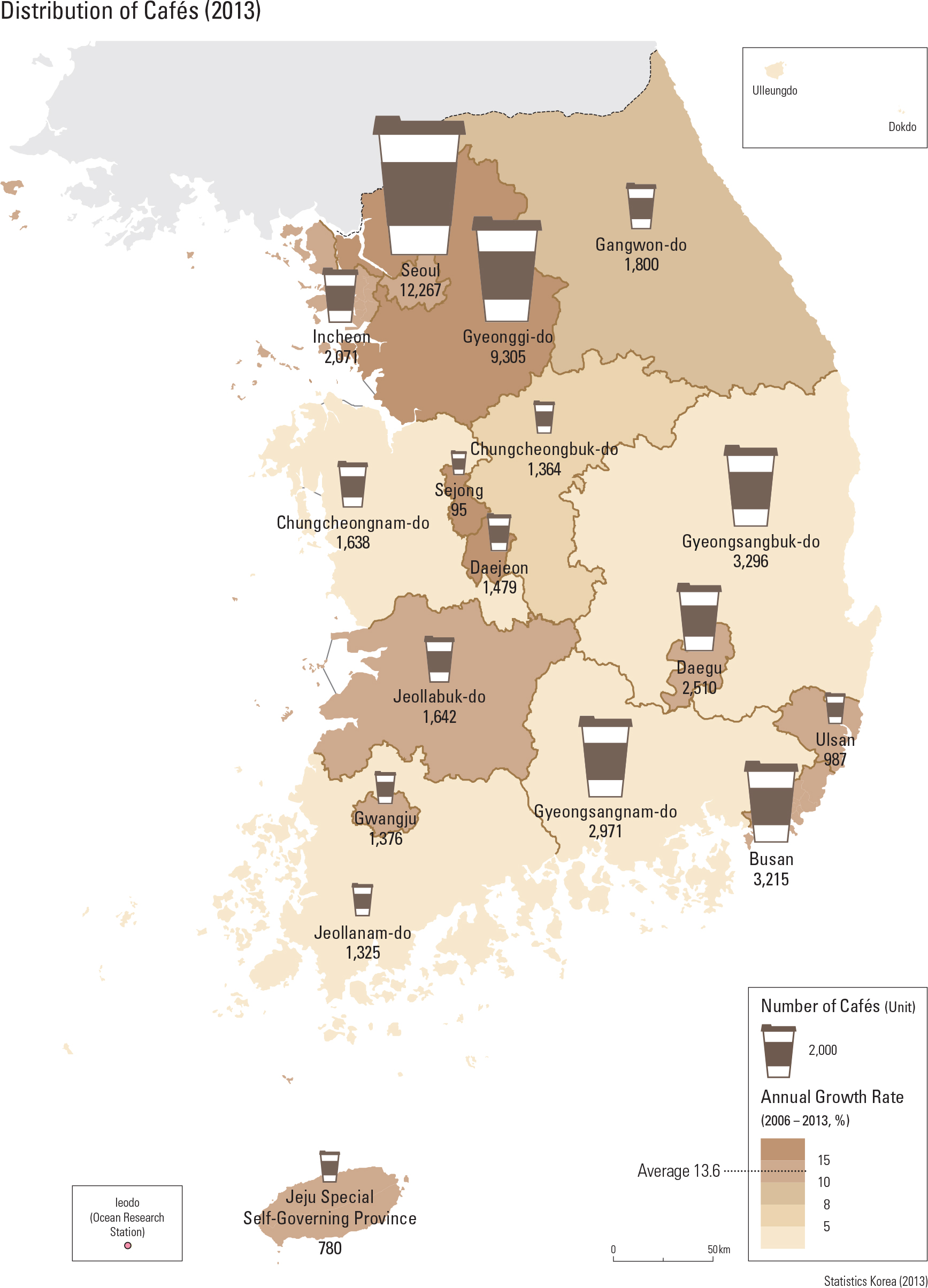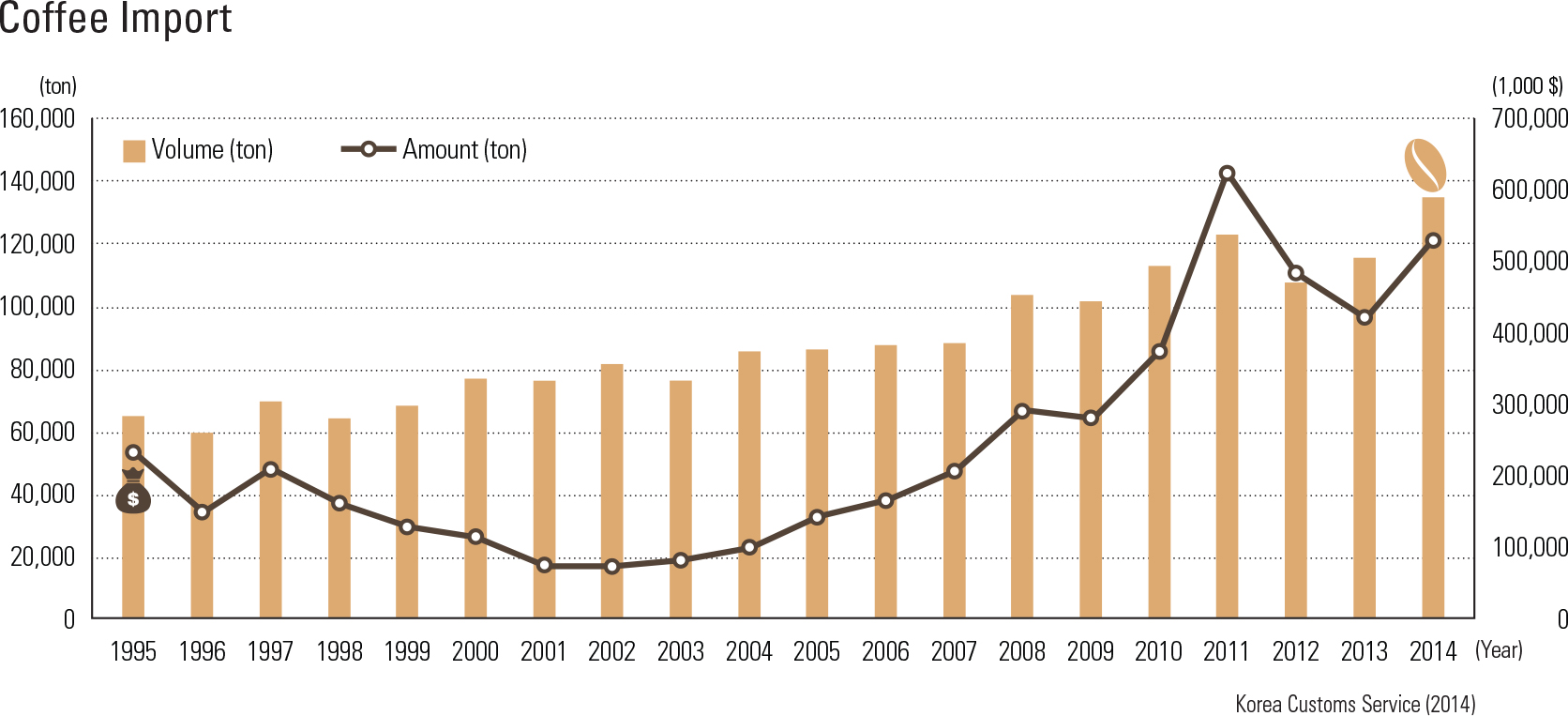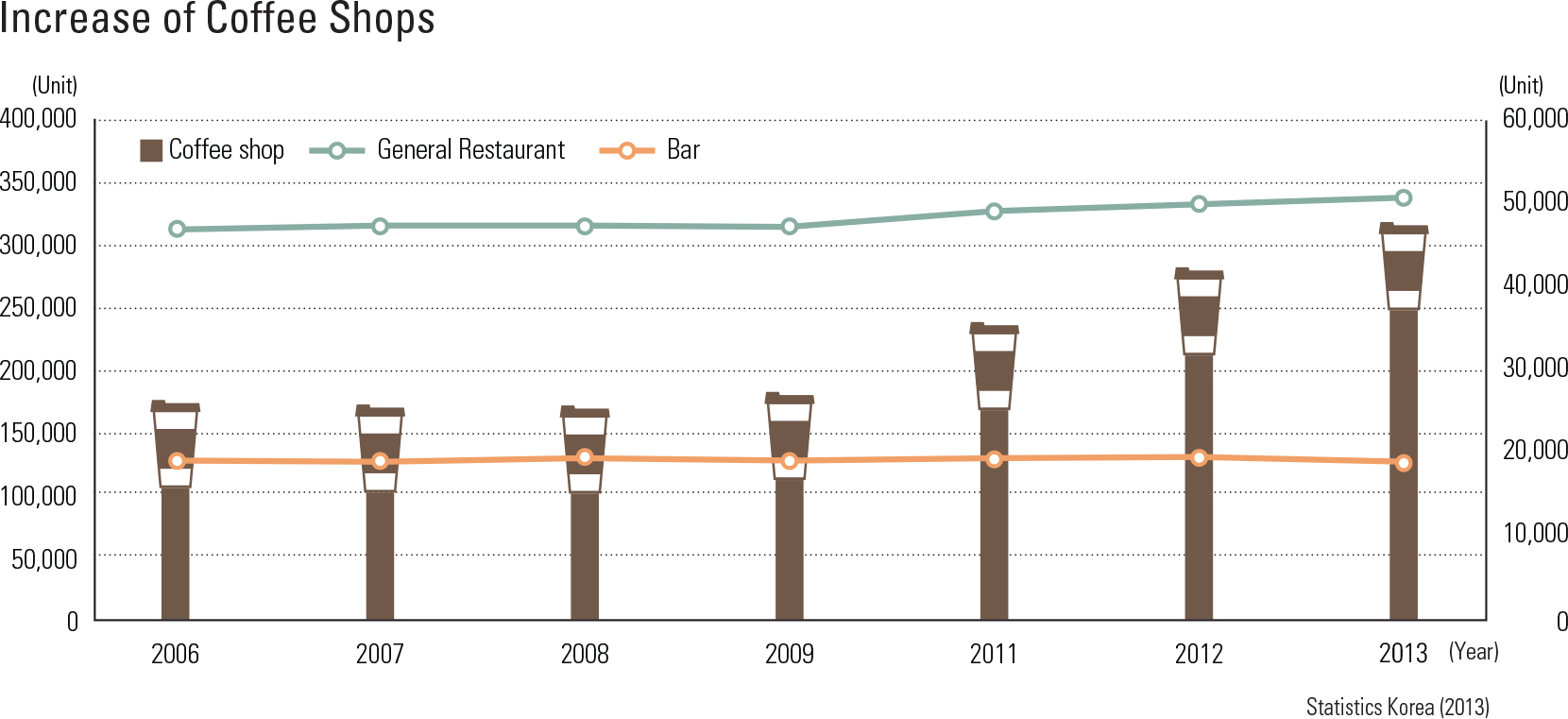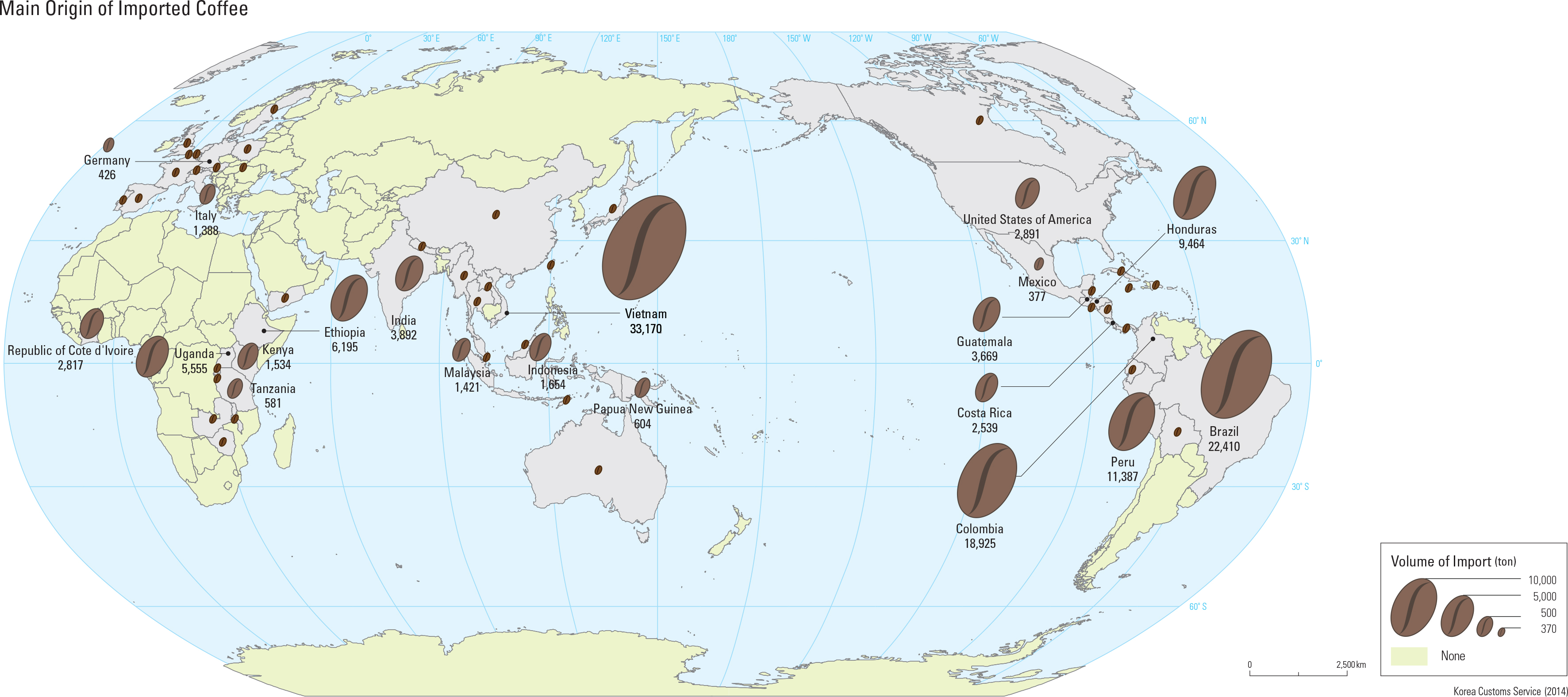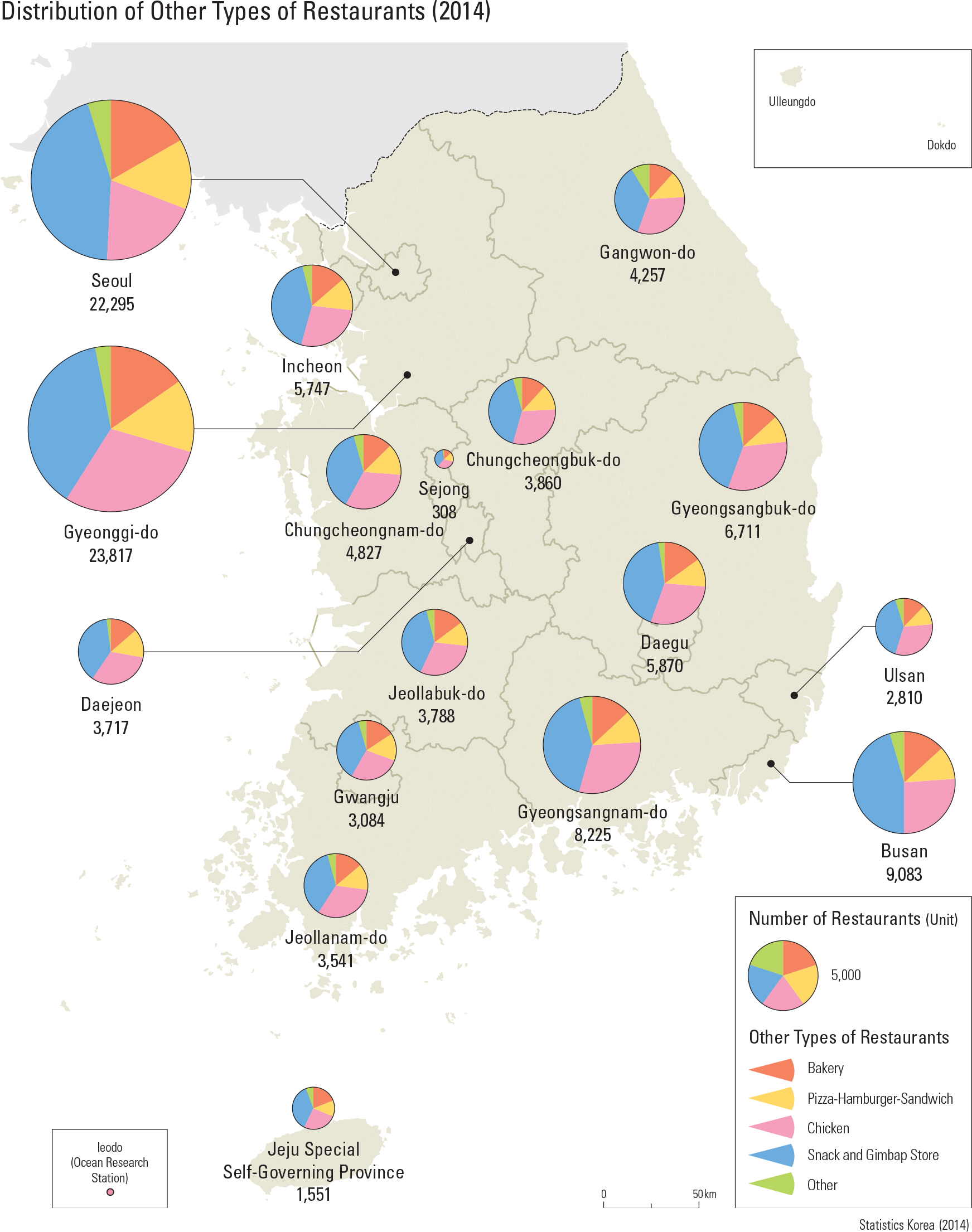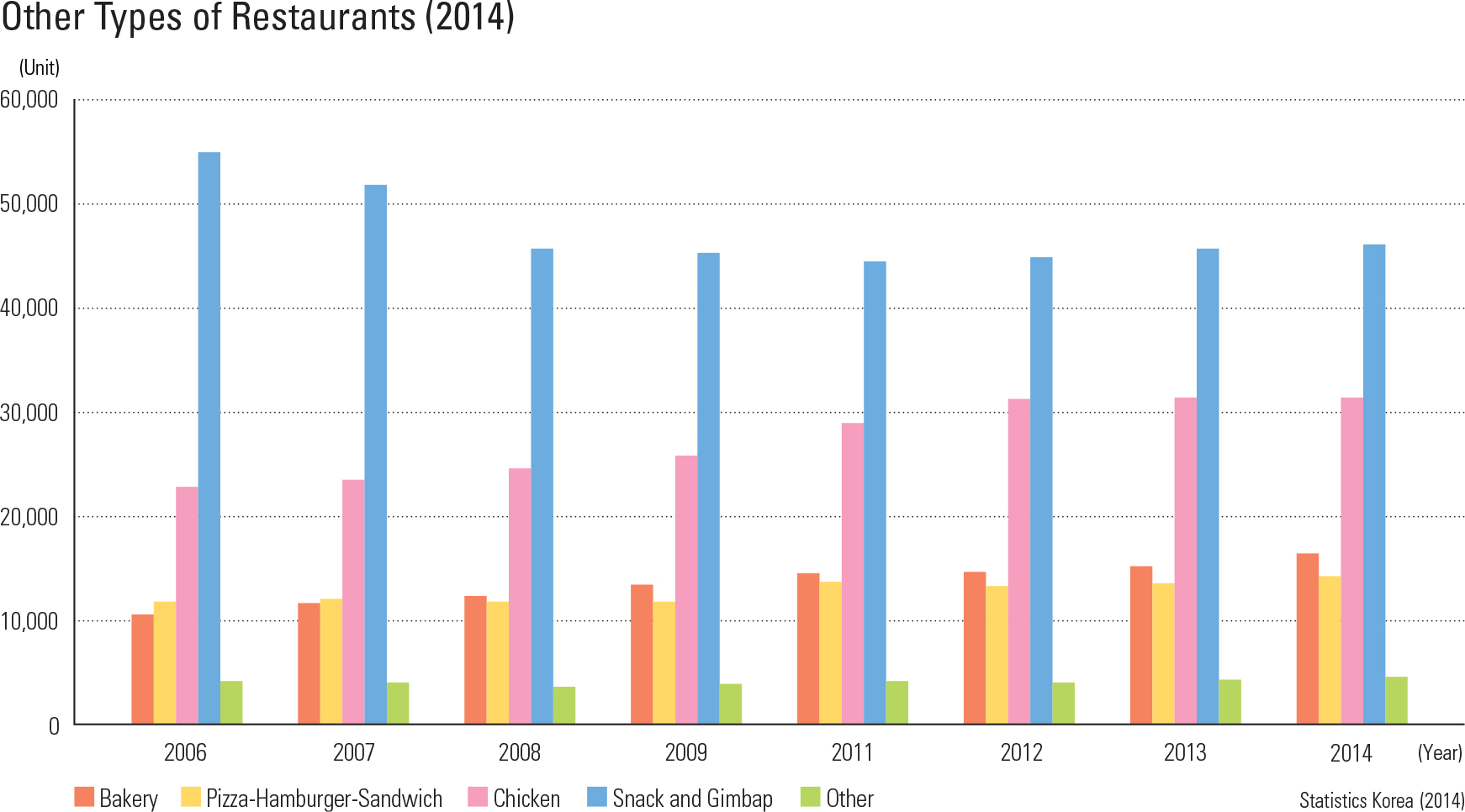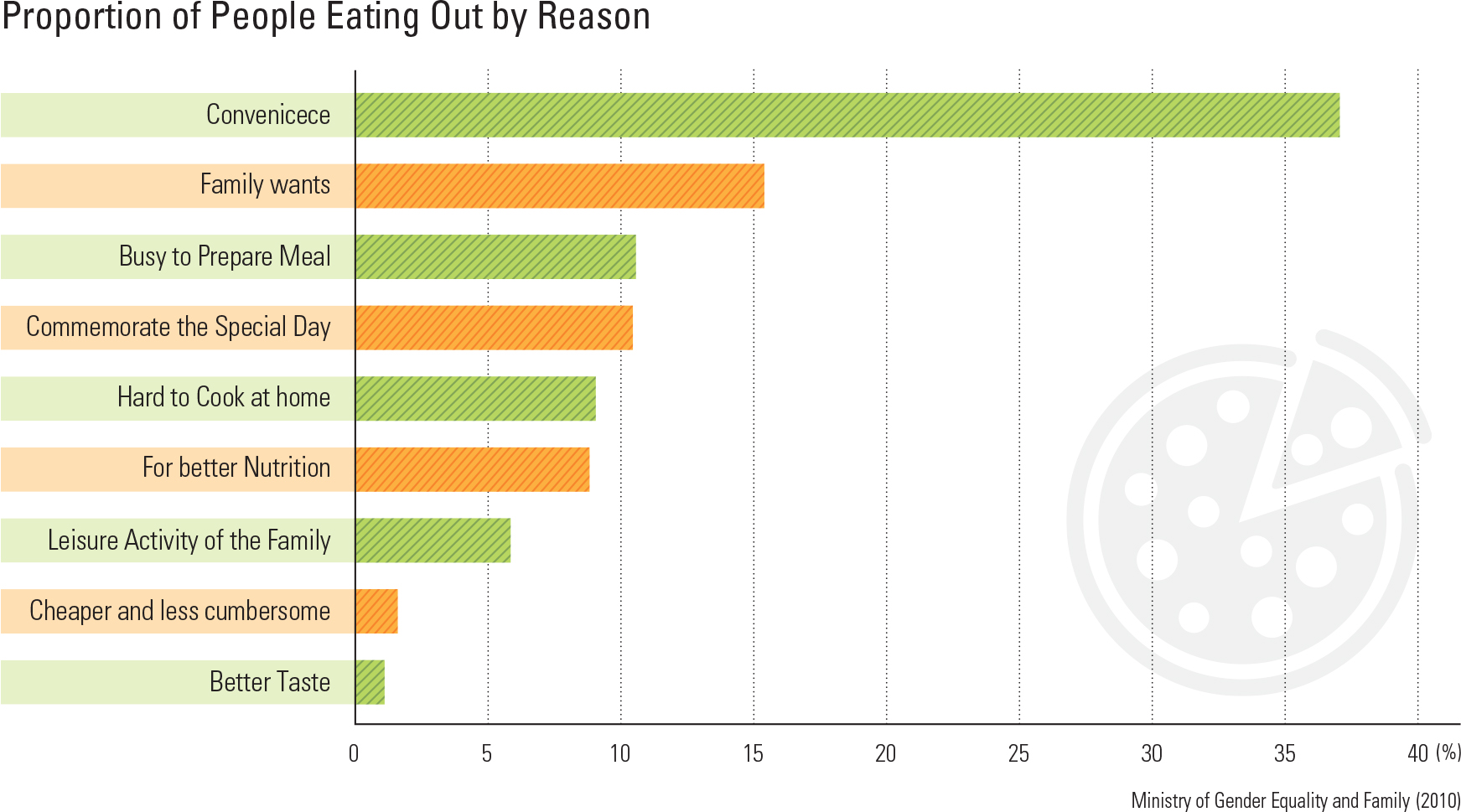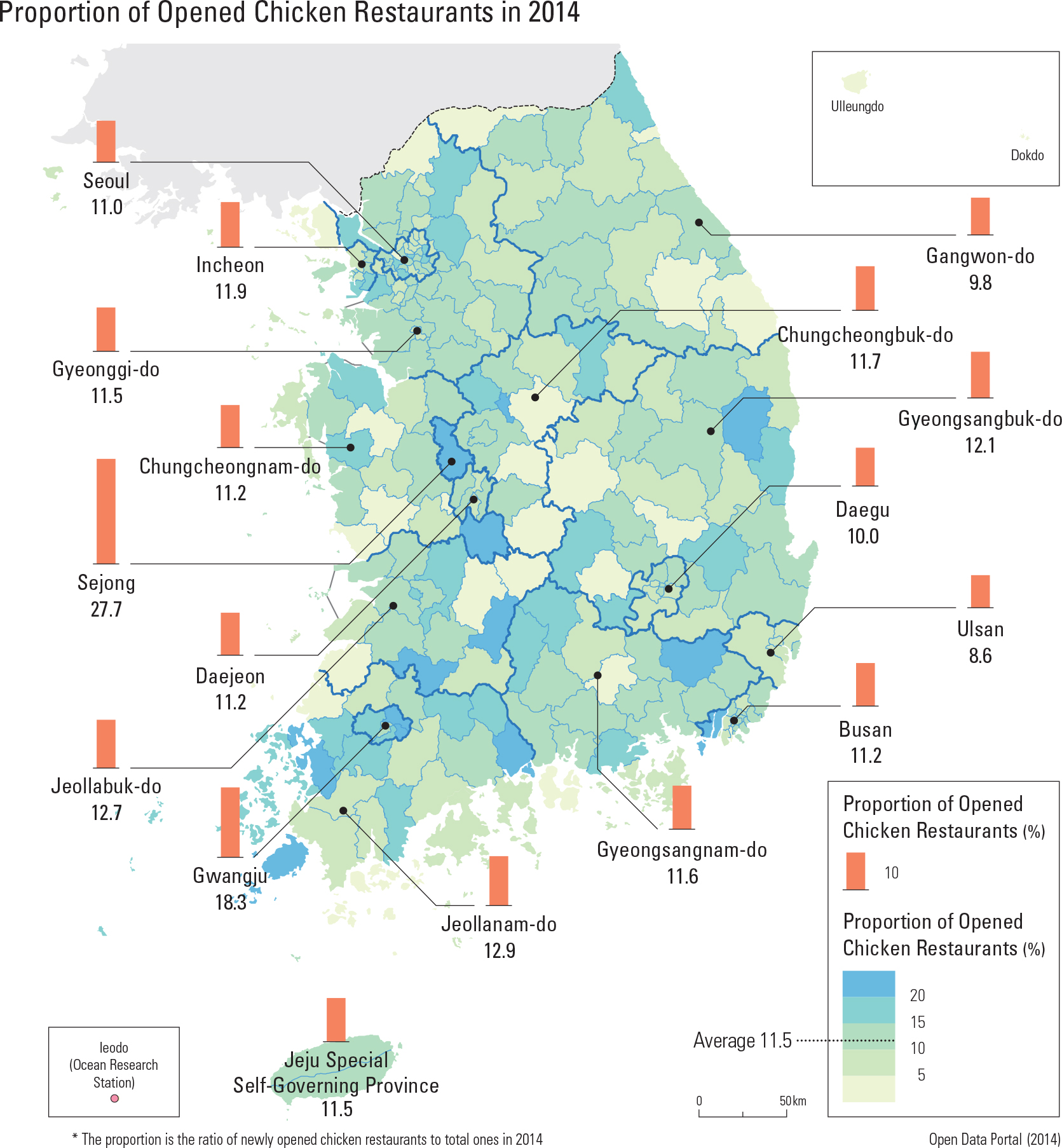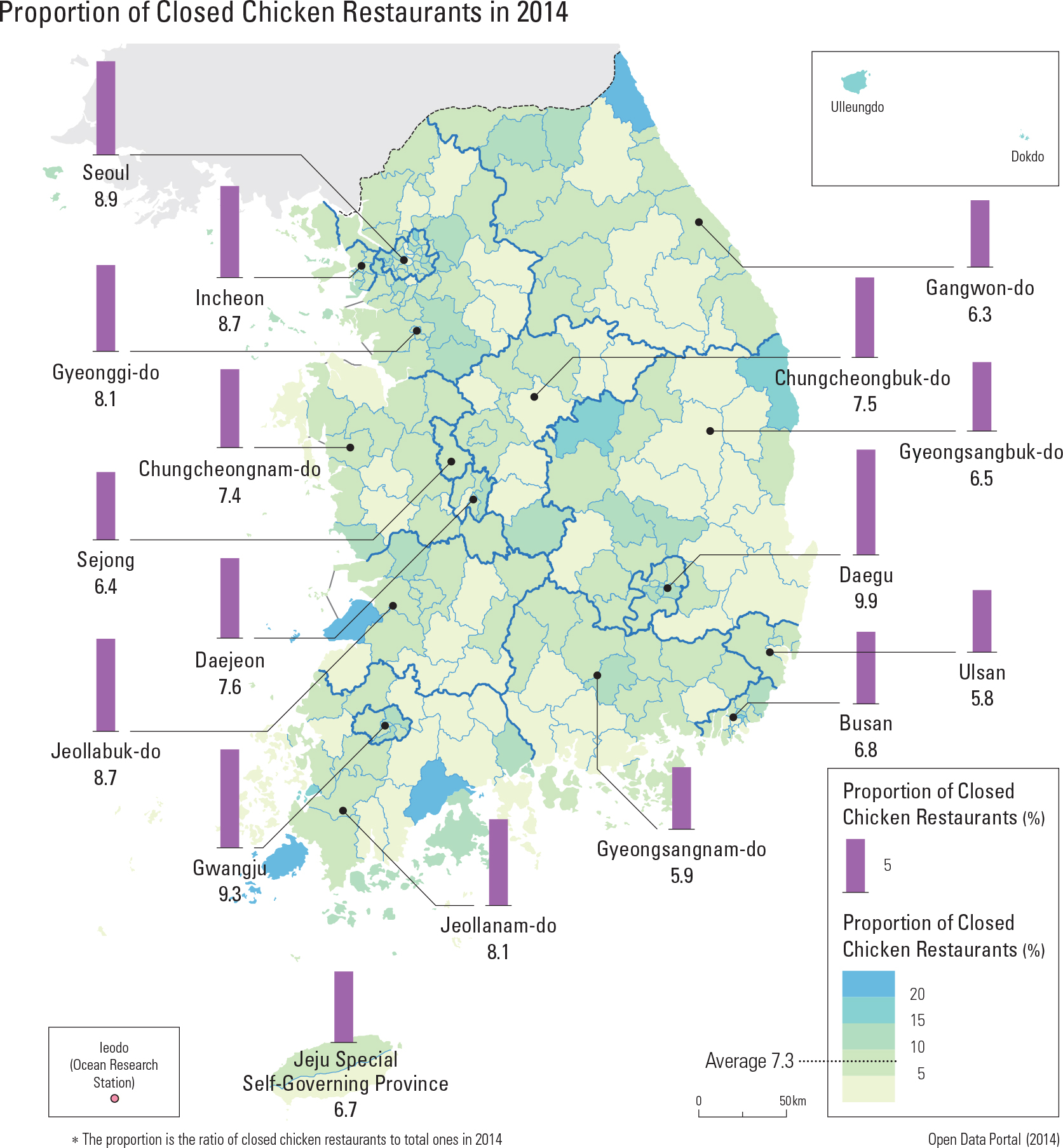English III
The Korean people have developed a diverse and unique food culture dating back to ancient times. The origin of their agriculture can be understood by studying carbonized grains, and shell mounds and fishing tackle found along the seashore are evidence that they collected seafood. In particular, the most important grain in the Korean diet is rice. Like many Asian countries in which rice has been a main source of carbohydrates, Korea has worked hard on land reclamation and securing a water supply to cultivate rice. Various reservoirs from ancient times show the long tradition of rice cultivation. Today, the consumption of rice is gradually declining, and Koreans are consuming more bread and noodles as wheat import has increased. Also, the modern Korean diet is largely characterized by a reduction in rice consumption and an increase in consumption of vegetables, fruits, meats, and dairy products.
One feature of Korean food is the development of fermented food. Kimchi is a typical example of Korean fermented food. With four distinct climate seasons, fermenting allows people to eat enough vegetables in winter by storing various fermented vegetables. In addition, various Koreanpastes are a type of fermented food for flavoring,such as Gochujang (red pepper paste), Doenjang (soybean paste), and Ganjang (soy sauce), which were traditionally fermented and consumed by individual households. Recently, more urban households purchase and consume commercially- available Korean pastes through the market. Still, many households continue to make their own Korean pastes, and the tradition of making Korean pastes and Gimjang (preparing kimchi for the winter) to send to their families living in cities remains an important part of Korean food culture.
The pattern of Korean food consumption is also related to the history of agricultural, livestock, and fish product imports. Korea’s import of food, including agricultural, livestock, and fish products, increases every year. In particular, foreign agricultural product imports are steadily growing because of various trade agreements with several countries.
Korea annually imports a large quantity of wheat, corn, and soybeans from the United States, Brazil, and Australia. Rice is also imported from various countries to fulfill mandatory import quotas, even though Korea produces enough rice domestically for itself. Imported fruits primarily include tropical fruit, with bananas and pineapples coming from Southeast Asia and large winter fruits from Korea’s free-trade agreement partner, Chile, in the southern hemisphere. Due to an increase in meat consumption, meat imports from the United States, Australia, and Brazil, and dairy imports from European countries, have increased. Fish imports are largely from China, a geographically close neighbor, but some fish products are also imported from countries that practice deep-sea fishing in the Pacific and Atlantic oceans. Vegetables come mainly from China, whose geographic proximity aids in retaining freshness.
Koreans are increasingly dining out. In particular, fewer households are having breakfast together at home, and the younger generation tends to neglect breakfast or not eat with their families. In addition, fewer students and middle- aged people are having dinner with their families; for those in their twenties, the proportion is less than thirty percent.
There have also been many changes in where food is purchased. In the past, many people bought fresh food from traditional markets or neighborhood stores, but the tendency to buy from supermarkets distributed across the city is gradually increasing. Supermarkets have become a major source for meat, dairy products, and processed foods. However, the proportion of people buying fruits, vegetables, and materials for Gimjang (preparing kimchi for the winter) from traditional markets is still high. In particular, acquaintances and personal networks are often used for buying red pepper and red pepper powder spices from the areas that produce them.
Korea is famous for its variety and number of street restaurants with unique cultural cuisine, such as Korean, Chinese, and Japanese. With the emergence of a multicultural society, restaurants introducing a variety of food from all around the world appear in all Korean cities.
The image of a worker clutching a take-out coffee during lunchtime in the central business district of a city is representative of daily life in urban areas. Coffee and tea-related culture has undergone rapid changes in Korea. The most recent typical phenomenon is the trend of buying freshly brewed coffee from a coffee shop. Recently, the number of coffee shops has been growing rapidly in cities, and franchise coffee shops are a common feature of the urban landscape. While the restaurant business is consistently expanding, the number of coffee shops is increasing at a higher rate. Coffee shops are also rapidly increasing in residential areas and suburbs as well as in the central areas of metropolitan cities.
As a result, the variety and amount of coffee imports have steadily grown. Brazil and other Latin American countries, Vietnam and other Southeast Asian countries, and African countries such as Ethiopia are common sources of coffee bean imports. Since the mid-2000s, the number of coffee shops has increased rapidly, but the number of coffee shops being closed after the initial enthusiasm has also increased. |
